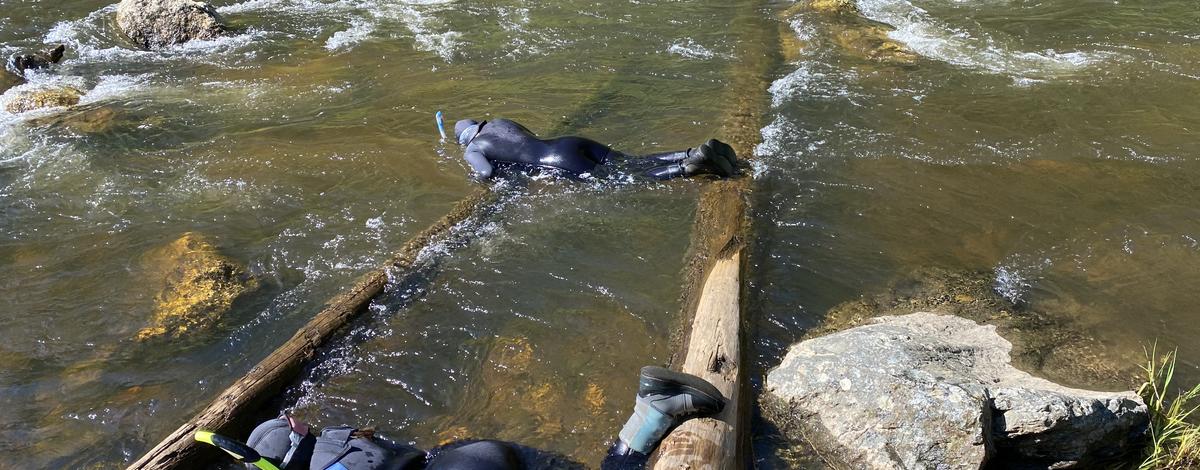When most people think of snorkeling, they picture a tropical setting where the water is a comfortable 80 degrees and the weather is always sunny. You’re wearing a swimsuit, goggles with a breathing tube, and swim fins as you flutter kick through comfortable water observing fish at the bottom of the sea.
For Idaho Fish and Game’s snorkel crews, it’s the Idaho way, not the tropical way. Donning wetsuits and head coverings, snorkel gear, and wading boots, no day is the same in some of Idaho’s most scenic rivers and streams. Weather and river conditions can change at any time and it’s tough work.

In late spring and throughout the summer, crews belly crawl upstream in bone-chilling water against strong currents, over and around rocks to collect important data that help managers make informed decisions about Idaho’s salmon and steelhead.
Since the 1980s, Idaho Fish and Game snorkel crews have surveyed juvenile wild salmon and steelhead across the state to track their abundance and distribution. Many of the rivers and streams where salmon and steelhead spawn and rear are in remote areas that are sometimes hard to access. Conditions are usually cold, fast-flowing, and rocky, so the most effective and efficient way to survey fisheries in these environments is through snorkel surveys.

A snorkel survey site is called a transect and is generally between 50 to 200 yards. Smaller streams can be surveyed by one person or in pairs, and in larger streams, snorkelers stretch from riverbank to riverbank in a line. Each snorkeler is responsible for counting fish in their area, while also trying to remain in line with the next person.
Snorkelers must be able to identify Chinook, coho, and sockeye salmon, steelhead, mountain whitefish, and several resident trout species, as well as non-game fish such as dace, shiners, suckers, and sculpin. Freshwater mussels and amphibians are also documented.

Before the season, crews must go through a significant training program, learning how to identify fish and estimate fish lengths and participating in instream practice. Because crews regularly work in backcountry locations, they are also trained in first aid and swift-water rescue.
In December, Idaho Fish and Game will post job announcements to hire crews for the upcoming season. Being on a snorkel crew provides opportunities to work with like-minded professionals and gain valuable work experience in fisheries research and management. Plus, they get to spend the entire summer outdoors in some of Idaho’s most scenic and remote places.
Read more about snorkel crews and Idaho's wild salmon and steelhead.
- Face down fish counts for Idaho's salmon and steelhead
- Video: Biologists snorkel headwaters streams to seek and count young salmon and steelhead


